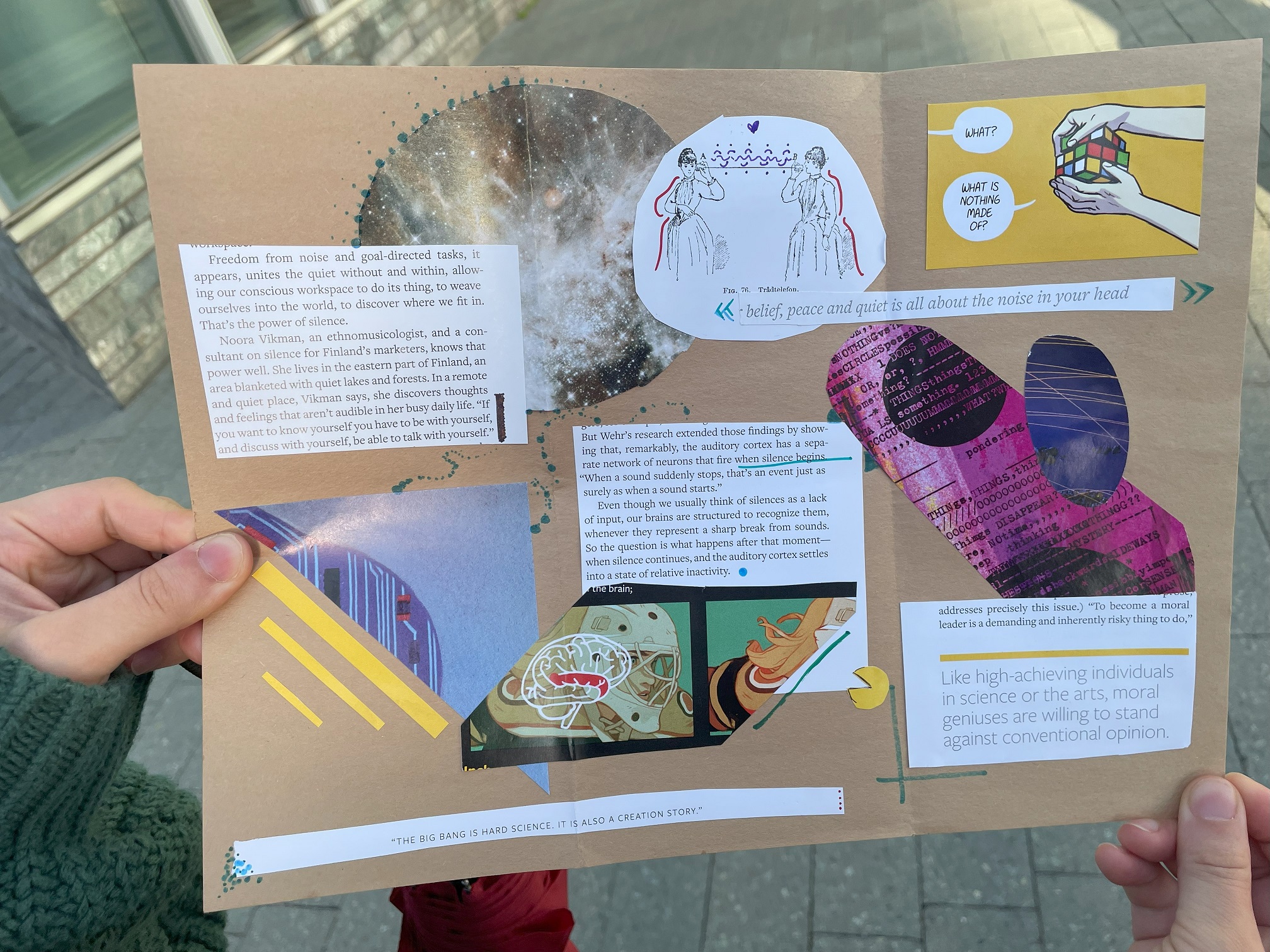




Materials:
- Zine Template
- Old science magazines or text books (for collage)
- Scissors
- Pens & Markers
- Glue
- Colored construction paper
Science Zine making is a fun and creative way to explore the components of a scientific research paper or poster. The templates I have created outline the sections in a traditional scientific research paper or poster:
- Title
- Authors
- Abstract
- Background/Motivation
- Methods and Materials
- Results
- Discussion
Students can be prompted to think about their most far out research project and use the images they find in the magazines to create a collage on their templates. They can also draw and write their own ideas.









